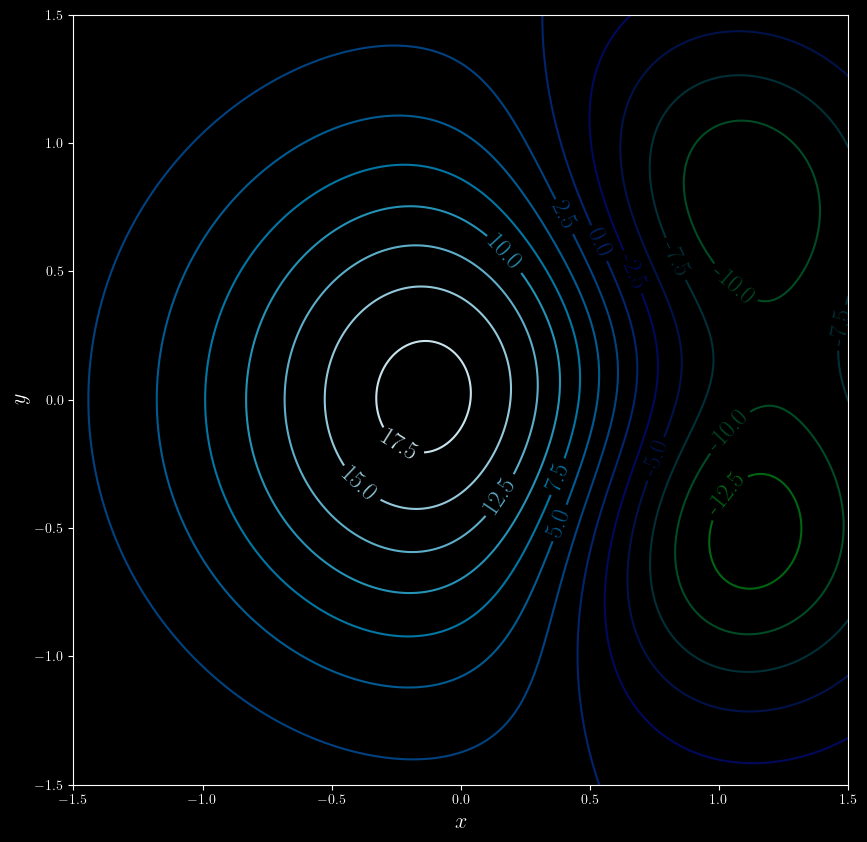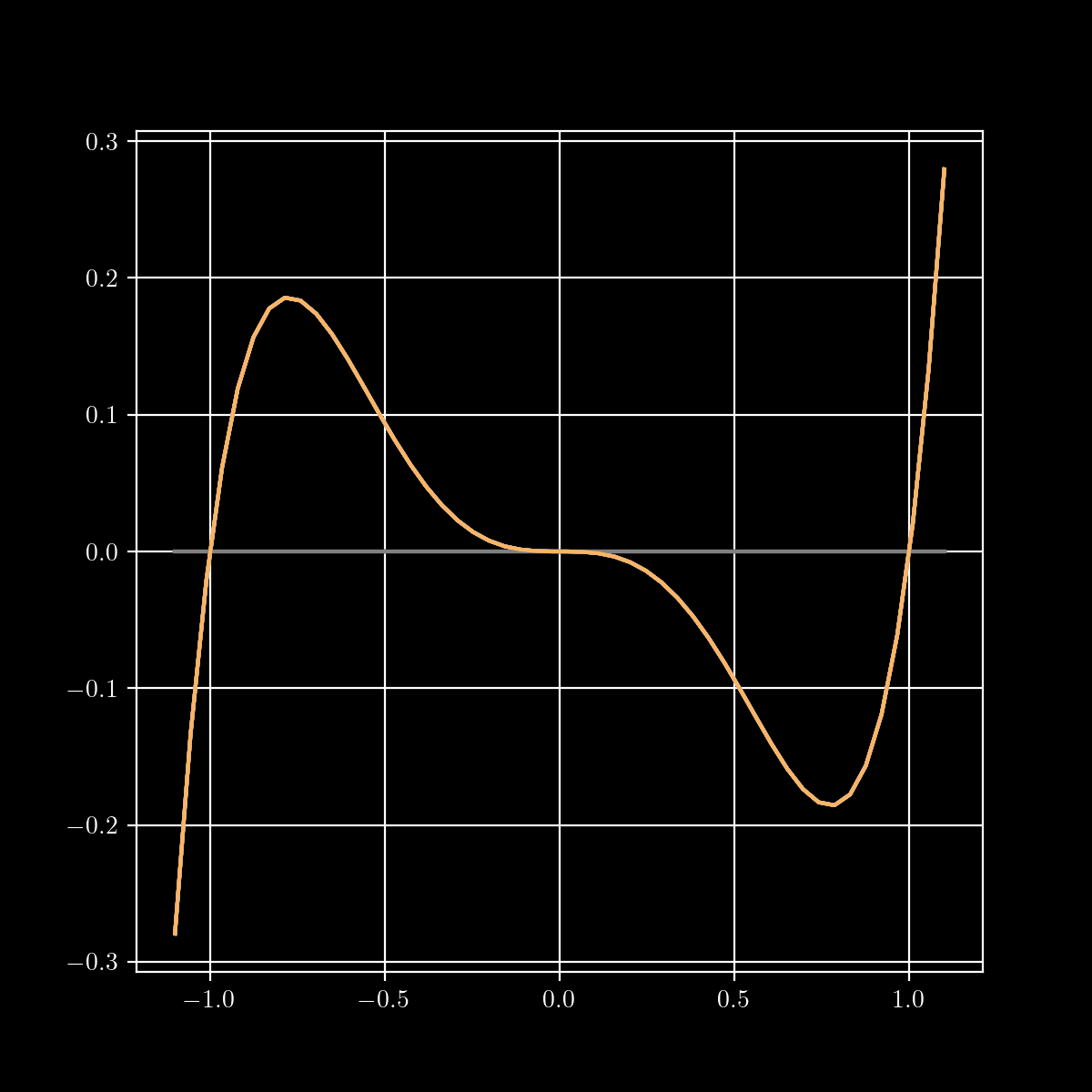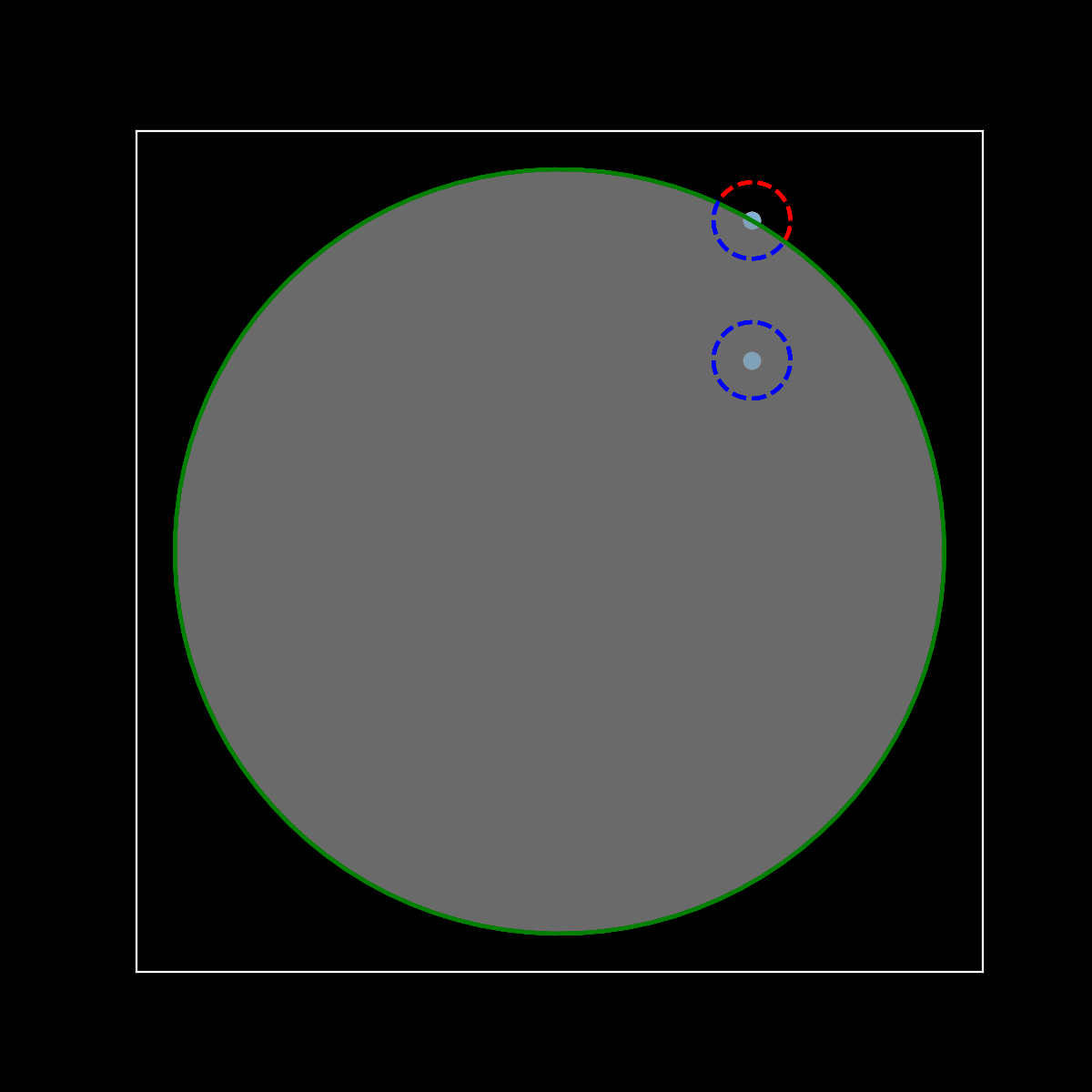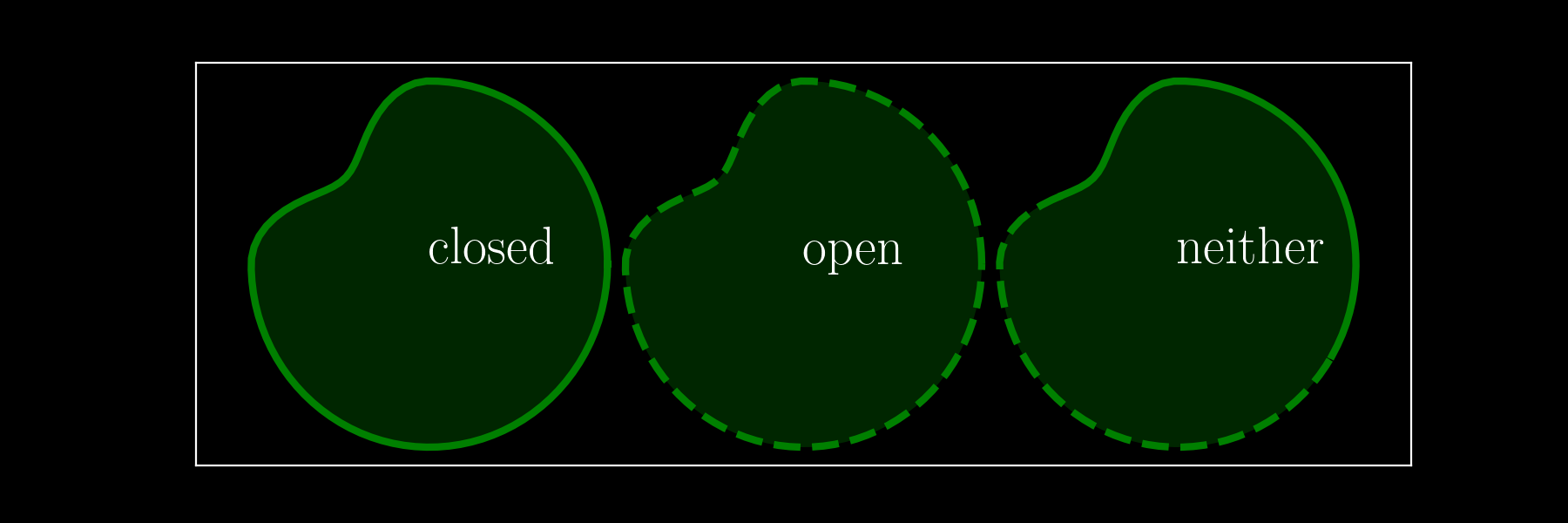Lecture 12
Local Min/Max
APMA E2000
Drew Youngren dcy2@columbia.edu
Announcements
- HW6 due Tues
- Rec 6 this week
1-minute review
The directional derivative of a differentiable function $f$ in the direction of unit vector $\vec u$ at $\vec x$ is \[D_{\vec u} f(\vec x) = \lim_{h\to 0}\frac{f(\vec x+h\vec u) - f(\vec x)}{h} = \nabla f(\vec x)\cdot\vec u.\]
3 important properties:
- $\nabla f$ is orthogonal to level sets.
- $\nabla f$ points in the direction of greatest change.
- $|\nabla f|$ is the amount of greatest change.
$\displaystyle \nabla f = \vec 0$
Definition
A local minimum (resp. maximum) of a scalar field $f$ is a value $f(\vec a)$ such that \[f(\vec a) \leq f(\vec x)\] (resp. $f(\vec a) \geq f(\vec x)$) for all positions $\vec x$ in some open set containing $\vec a$.
Definition
An absolute minimum (resp. maximum) of a scalar field $f$ on a particular domain $D$ is a value $f(\vec a)$ such that \[f(\vec a) \leq f(\vec x)\] (resp. $f(\vec a) \geq f(\vec x)$) for all positions $\vec x \in D$.
Main Examples
Consider functions of the form \[ f(x,y) = \pm x^2 \pm\ y^2. \]
Definition
A critical point of a function $f$ is a position $a$ such that $f$ is not differentiable or \[\nabla f(\vec a) = \vec 0. \]
Main Result
Suppose $f(\vec a)$ is a local extremum, then $\vec a$ is a critical point.
Example
Identify the critical points from the contour plot below. Do they correspond with a local min or max or neither?

Example
Find all critical points of the function \[ f(x,y) = x^4 + y^4 + 4 x y - 1.\]
Solution. \[\nabla f = \bv{4x^3 + 4y \\ 4 y^3 + 4x} = \bv{0 \\ 0}\]
Substituting $y = -x^3$,\[ x^9 - x = \]\[ x(x - 1)(x + 1)(x^2 + 1)(x^4 +1) = 0 \] has roots $x = 0, \pm 1$.
This gives 3 critical points: $(-1,1)$, $(0,0)$, and $(1, -1)$.
Classifying Critical Points
Recall
In 1-D, the second-derivative determines classification at critical points.

The Second Derivative Test
If all 2nd order partials of $f(x,y)$ are continuous in the neighborhood of a critical point $(a,b)$, let \[ D = f_{xx}f_{yy} - f_{xy}f_{yx} = \begin{vmatrix} \frac{\partial ^2 f}{\partial x^2} & \frac{\partial ^2 f}{\partial y \partial x} \\ \frac{\partial ^2 f}{\partial x \partial y} & \frac{\partial ^2 f}{\partial y^2} \end{vmatrix}.\]- if $D>0$ and $f_{xx} < 0$, $f(a,b)$ is a local maximum.
- if $D>0$ and $f_{xx} > 0$, $f(a,b)$ is a local minimum.
- if $D<0$, $(a,b)$ is a saddle point.
Otherwise, the test is inconclusive.
Example
Classify the critical points of the function \[ f(x,y) = x^4 + y^4 + 4xy - 1 \] above.
| $(x,y)$ | $f_{xx}$ | $f_{yy}$ | $f_{xy}$ | $D$ | class |
|---|---|---|---|---|---|
| $(0,0)$ | 0 | 0 | 4 | -16 | saddle |
| $(1,-1)$ | 12 | 12 | 4 | 128 | min |
| $(-1,1)$ | 12 | 12 | 4 | 128 | min |
Optimization
Some Topology
An open set $U\subset \RR^n$ is one where each element can be surrounded by a (small) ball of elements in the set.
A closed set contains all its boundary points.


Kinds of Optimization
Unconstrained
On open sets $\longrightarrow$ look for critical points
Constrained
On boundary points $\longrightarrow$ Lagrange multipliers
Example - Unconstrained
Find the closest point to the origin on the plane \[z = x -2y + 3.\]
Learning Outcomes
You should be able to...
- Provide a technical definition of local extrema.
- Identify critical points of scalar fields.
- Give examples of each class of critical point in 2 and 3 dimensions.
- Correctly implement the 2nd derivative test in 2 dimensions.